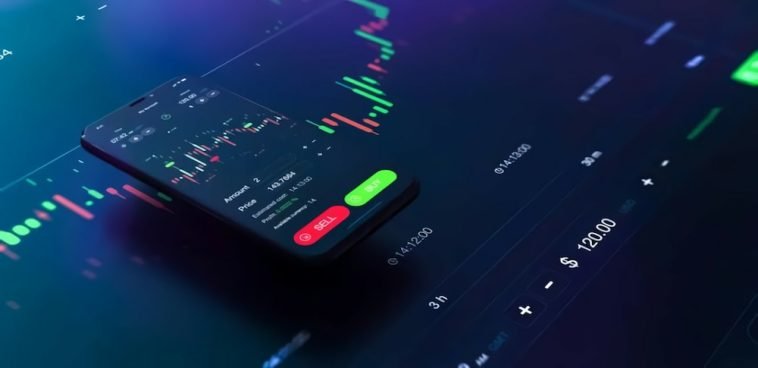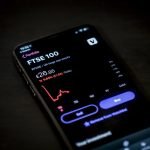Introduction.
The foreign exchange market, also known as Forex, provides individuals with a dynamic and potentially profitable arena for currency trading.
MetaTrader 4 (MT4), developed by MetaQuotes Software, is a widely recognized and user-friendly trading platform that empowers traders to access and participate in the Forex market efficiently.
Whether you are a beginner or an experienced trader, learning how to trade Forex on MetaTrader 4 can open up a world of opportunities and help you navigate the complexities of the global currency market.
In this guide, we will take you through the essential steps and features of MetaTrader 4, equipping you with the knowledge and skills necessary to engage in Forex trading effectively.
Disclaimer.
Please note that any financial advice provided by me is for informational purposes only and should not be construed as professional financial advice.
Investing involves risk and you should always do your research and consult with a licensed financial advisor before making any investment decisions.
I do not endorse any specific investments and is not responsible for any financial losses or gains that may result from following our advice.
The information provided by me is based on our best knowledge and understanding of the subject matter, but we make no representations or warranties of any kind, express or implied, about the completeness, accuracy, reliability, suitability or availability with respect of the information, products, services, or related graphics contained in any of our responses.
How Do I Trade Forex on MetaTrader 4?
MetaTrader 4 (MT4), developed by MetaQuotes Software, is one of the most widely used trading platforms in the Forex industry.
With its comprehensive features and user-friendly interface, MetaTrader 4 provides traders with the necessary tools to engage in Forex trading effectively.
In this article, we will explore the steps involved in trading Forex on MetaTrader 4.
Step 1: Opening a MetaTrader 4 Account.
To start trading Forex on MetaTrader 4, you first need to open an account with a reputable Forex broker that supports the platform.
Choose a broker that offers competitive spreads, reliable trade execution, and regulatory compliance.
Once you have selected a broker, follow their account opening procedures, provide the necessary documentation, and fund your trading account.
Step 2: Downloading and Install MetaTrader 4.
After opening your account, you can download the MetaTrader 4 platform from your broker’s website. The platform is available for Windows, Mac, and mobile devices.
Once the download is complete, run the installation file and follow the instructions to install the software on your computer or mobile device.
Step 3: Logging Into MetaTrader 4.
Launch the MetaTrader 4 platform and enter your account login credentials provided by your broker. You will need your account number, password, and the server address.
Upon successful login, you will be connected to your broker’s trading servers, and you can start exploring the features and tools of the platform.
Step 4: Navigating the MetaTrader 4 Interface.
Familiarize yourself with the MetaTrader 4 interface, which consists of different sections and features. The main sections include the Market Watch, Charting Area, Navigator, and Terminal.
The Market Watch displays a list of available currency pairs, their bid and ask prices, and other relevant information. The Charting Area is where you can analyze price charts and apply technical indicators.
The Navigator provides access to indicators, expert advisors, and scripts, while the Terminal displays your account information, trade history, and trade-related functions.
Step 5: Understanding Currency Pairs.
Forex trading involves trading currency pairs. Each currency pair consists of a base currency and a quote currency, and their exchange rates fluctuate in the market.
For example, in the EUR/USD currency pair, the euro (EUR) is the base currency, and the U.S. dollar (USD) is the quote currency.
Understanding currency pairs and their price movements is essential when analyzing the market and making trading decisions.
Step 6: Analyzing the Market and Placing Trades.
MetaTrader 4 provides a wide range of tools and features for market analysis. You can access various types of charts, apply technical indicators, draw trendlines, and analyze price patterns to identify potential trading opportunities.
To place a trade, right-click on a currency pair in the Market Watch window, select “New Order,” and specify the trade parameters, such as the volume (lot size), stop-loss level, take-profit level, and order type (market or pending order). Once you have entered your trade details, click “Buy” or “Sell” to execute the trade.
Step 7: Managing Your Trades.
After placing a trade, it’s important to monitor and manage your positions effectively. MetaTrader 4 allows you to set stop-loss and take-profit levels to manage your risk and automatically close your trades when certain price levels are reached.
You can modify or close trades by right-clicking on the trade in the Trade tab of the Terminal window.
Step 8: Reviewing Your Performance and Improving Your Strategy.
To become a successful Forex trader, it’s crucial to review your trading performance regularly. MetaTrader 4 provides a comprehensive trade history that allows you to analyze your trades, assess your profitability, and identify strengths and weaknesses in your trading strategy.
Use this information to refine your approach, adjust your risk management techniques, and continuously improve your trading skills.
Hey there, dear reader! We hope you’re enjoying the content on our blog. Did you know we have a treasure trove of other insightful articles waiting for you?
Check out the link to the articles below to learn how to be productive and scale your Forex career.
- How To Succeed In Forex Trading
- How To Teach Yourself Forex Trading
- How To Create a Robot For Forex Trading
- How To Open a Demo Account For Forex Trading
- How To Minimize Losses and Maximize Profits In Forex Trading
- How To Learn Forex Trading Fast
- How To Use Fundamental Analysis In Forex Trading
- How To Make a Forex Trading Journal
- How To Create a Forex Trading Journal In Excel
- How To Do Forex Trading With AI
- How To Use RSI Indicator In Forex Trading
- How To Trade Gold In Forex
- How To Grow a Small Forex Account
- How To Get a Job as a Forex Trader
- How To Start Forex Trading In Nigeria
Conclusion.
MetaTrader 4 is a powerful platform that provides traders with the necessary tools and features to engage in Forex trading effectively.
By following these steps and continually educating yourself about Forex trading strategies, risk management, and market analysis, you can increase your chances of success.
Remember that Forex trading involves risks, and it’s important to start with a demo account to practice and gain experience before trading with real money.
With dedication, discipline, and a solid trading plan, you can navigate the Forex market efficiently and potentially achieve your financial goals using MetaTrader 4.
Hey there, dear reader! We hope you’re enjoying the content on our blog. Did you know we have a treasure trove of other insightful articles waiting for you?
Check out the link to the articles below to learn how to be productive and scale your Forex career.
- How To Succeed In Forex Trading
- How To Teach Yourself Forex Trading
- How To Create a Robot For Forex Trading
- How To Open a Demo Account For Forex Trading
- How To Minimize Losses and Maximize Profits In Forex Trading
- How To Learn Forex Trading Fast
- How To Use Fundamental Analysis In Forex Trading
- How To Make a Forex Trading Journal
- How To Create a Forex Trading Journal In Excel
- How To Do Forex Trading With AI
- How To Use RSI Indicator In Forex Trading
- How To Trade Gold In Forex
- How To Grow a Small Forex Account
- How To Get a Job as a Forex Trader
- How To Start Forex Trading In Nigeria






GIPHY App Key not set. Please check settings